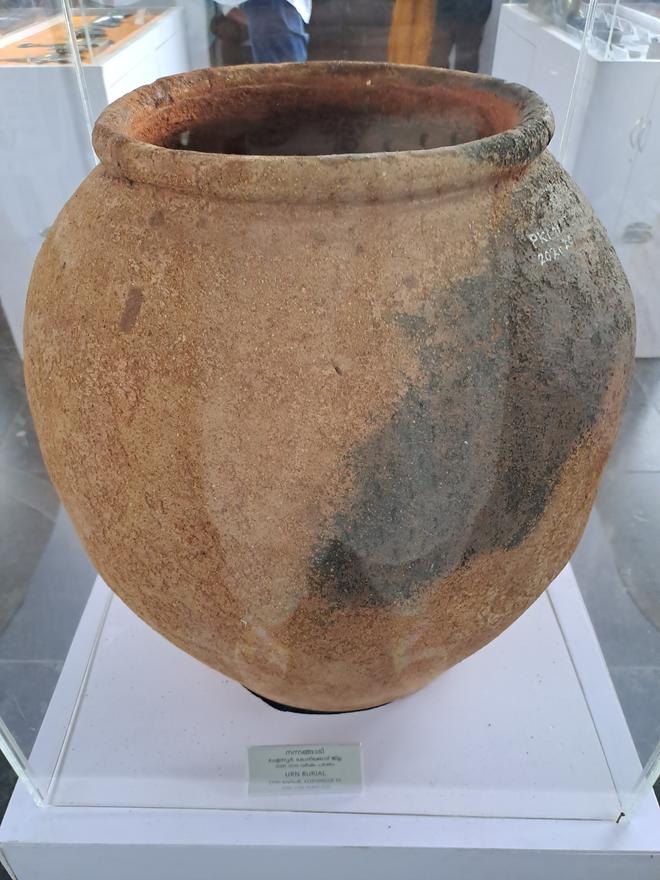A headless Buddha sculpture found during explorations from the vicinity of the Kottapuram fort near Kodungalloor in Thrissur district in 2007 was being used to tether a country boat to prevent it from drifting away in the river.
The fort, also known as Cranganore fort, was constructed by the Portuguese in 1523. The Archaeology department began research at Kottapuram in 2000 and numerous artefacts have been recovered since from the fort’s vicinity.
The Buddha sculpture, believed to date back to the 9th century, is one of the highlights of Keralathaara, an exhibition organised by the Archaeology department at the bandstand of Kanakakkunnu Palace in connection with the ongoing Keraleeyam.
The expo has artefacts ranging from Neolithic tools and a burial urn to anklets used by oracles and badges used in the erstwhile Travancore on display.
On display is a corroded iron lamp recovered from a megalithic chamber at Kudallur in Palakkad district that is said to be the oldest lamp found in the State. It was presumably hung from something and taken along to dispel darkness. The other artefacts from this period, displayed in a glass case at the expo, include a dagger, also from Kudallur; a hook from Kakkodi in Kozhikode district; an arrow and a sickle found from Kattakambal in Thrissur district, and an axe from Nedumkandam in Idukki district.
A rare four-legged terracotta jar excavated from rock-cut chambers in Arikkulam in Kozhikode district is yet another attraction. One such chamber at Kakkodi in Kozhikode district yielded a terracotta bowl and a terracotta ring stand from it. Both of these are estimated to be 2,000-2,500 years old. Another terracotta bowl found from Nagaparamba and a jar from Koottilangadi, both in Malappuram district, and a terracotta pot from Nedumkandam also belong to the same period.

Archaeology officials at hand to provide information to visitors at the expo say these chambers were used for reburial and goods believed to be of use in afterlife were found there. Some of these chambers have yielded bowls containing bones, and others grains, husk, chisel, or terracotta beads strung together.
A burial urn from Chelannur in Kozhikode that is on display is around 2,000-2,500 years old. Officials said they had found a number of bones in it.
Neolithic stone axes, dating back to more than 3,000 years ago and recovered from Kalady in Ernakulam and Cheemeni in Kasaragod, are also exhibited. Stone Age remains found in the State mostly belong to the Mesolithic and Neolithic era. During the Mesolithic era, the tools used be less than 3 cm and in geometric shapes, while by the Neolithic period the tools were more polished and evolved.
Besides a palm-leaf manuscript from the 17th century, cannon balls from Vadakara and Hosdurg, terracotta figurines from Aranmula in Pathanamthitta; a ‘pallankuzhi’ board found from Sreepadam Palace in the Fort area here; an ‘aamadapetti’ (jewllery box) from the Nedumangad Koyikkal Palace museum; a ‘naazhipoottu’ (lock) and key from Hill Palace in Ernakulam; weights and measures such as ‘changazhi’, ‘pakka’, ‘marakkal’, and ‘para’; and a salt water dispenser made using ‘pezhu’ wood are some other interesting artefacts on display at the expo.







